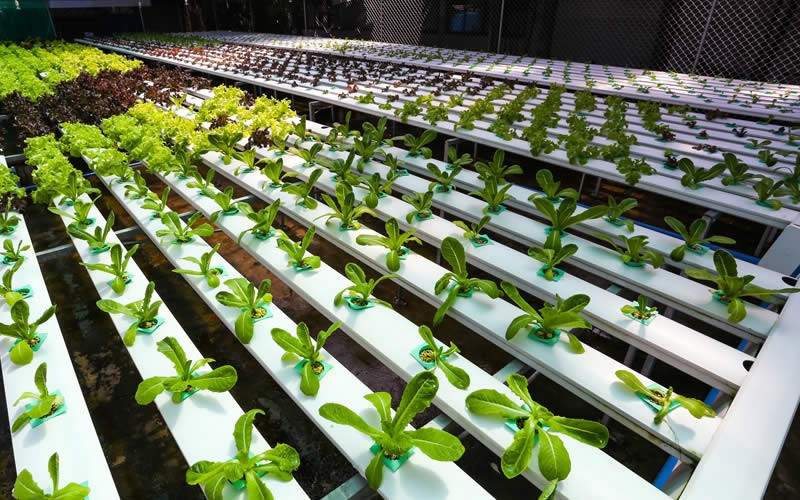Hydroponics farming is the growing of crops without using soil but only water. Water recycling happens during hydroponics farming and those plants growing on the soil benefit from it. Enriching the water with minerals is how the crops can easily absorb it. This process is aquaculture or soilless cultivation.
What Plants Grow in Hydroponics?
The common plants growing in hydroponics are celery, cucumber, strawberries, and tomatoes. Plants with deep roots and tubers pose a challenge during growth. Tall plants such as maize, millet, and trees poorly grow as their supporting stems grow weaker from the ground.
What is Needed in Hydroponics Farming?

The following are some of the things you need in hydroponics farming;
- Plants-These are the type of crop one chooses for growing for example tomatoes, celery seeds, and baby spinach.
- Greenhouse- Enclosing tent-like structures in which plants grow at. This is advantageous as plants will rarely get pests and diseases from open air.
- Water- Recycling of water saves water shortage.
- Sunlight- Plants require light for chlorophyll which is the green coloring matter. The source of light is making some half part of the greenhouse clear for plants easily absorb.
- Power Accessibility- Solar-generating power or electricity is. During dark days, light may be required. For water recycling, power is important during pumping.
Advantages of hydroponics
- It easily fits both wetlands and dry lands’ climatic conditions.
- Some areas are of low nutrient levels and hence easily access the nutrients through hydroponics.
- More space is accessible for the growing of crops as plants grow closely together.
- Hydroponics is water-saving as much water recycling takes place. Most hydroponics farming takes place in greenhouses.
- Pest infection on plants is rarely observed as cultivation is in an enclosed greenhouse.
- Harvesting crops in hydroponics farming is easy as plant leveling is done on higher ground to paving way for water running underneath.
Disadvantages of hydroponics farming.
The following are some of the disadvantages relating to this type of farming;
- Hydroponics requires electricity for running effectively and power outages lead to the loss of some crops.
- This type of farming requires trained personnel as some rules need following especially when it comes to mixing nutrients in the water.
- Acute water shortage in some areas is one of the leading challenges in making this type of farming successful.
- The transmission of water-related diseases among plants grows as the water is passing through all plants in that specific area. This affects yielding results.
- Starting capital is high for most farmers willing to practice this farming.
- Bill Clinton age, early life, wife, children, career, net worth.
- Who is DR. William Samoei Ruto? Age, Net worth
- Who is Geno Smith, age, wife, children, teams, net worth?
- Miranda Lambert bio, age, husband, children, career, net worth.
- Adele Bio-Age, Education, Marital status, Net worth, and songs.
- Dave Fraser Bio-Age, Family, Children, Wife, Net Worth, Career.
- Jim Gardner Bio-Age, Edu, Wife, Children, and Career.
- Kenya Institute of special education, courses.
- How is The Lenana Boy school and location?
- Bay head elementary school history, enrolment, programs offered.
- List of Accredited Private Universities in Kenya
- What is the history of Kenyatta University?
- List of Best private secondary schools in Nairobi County.
- Public Universities in Kenya